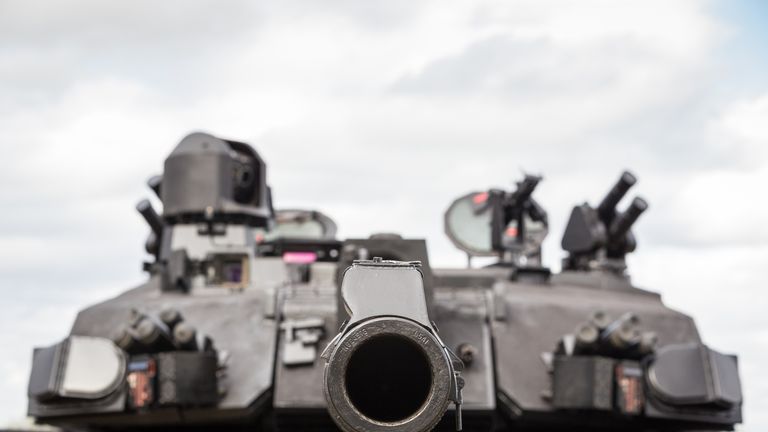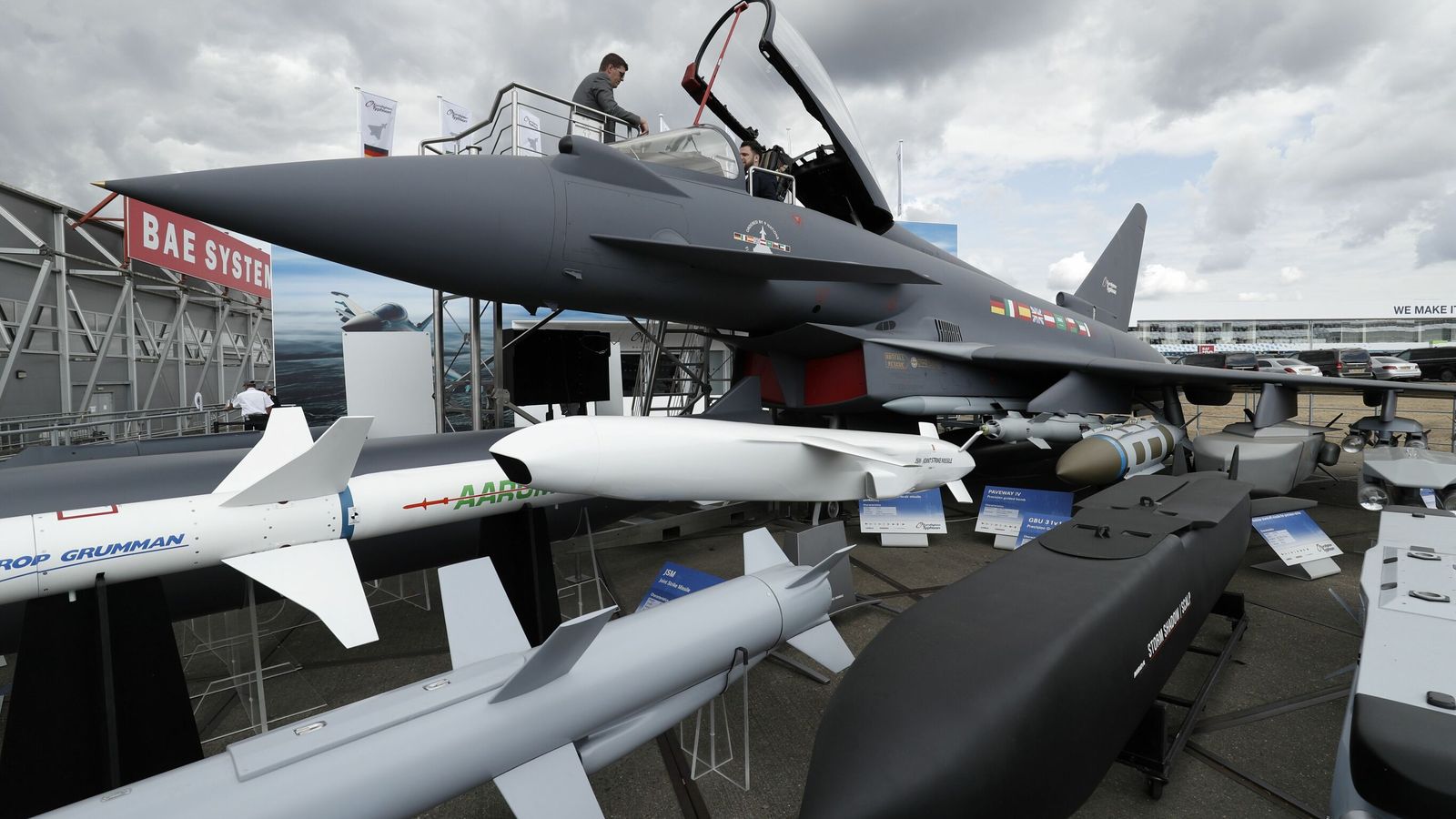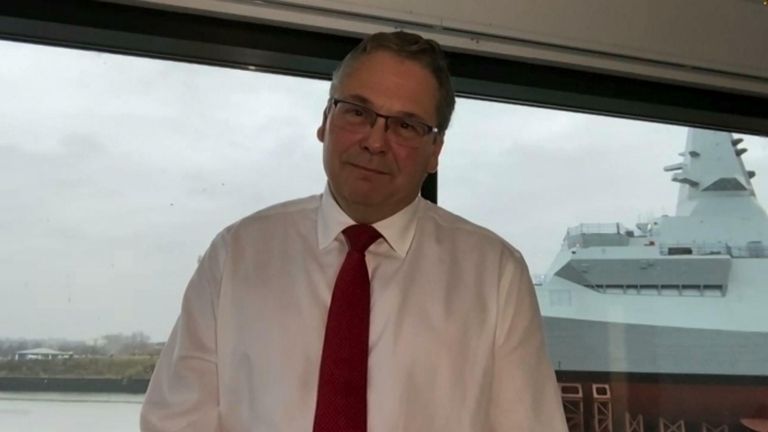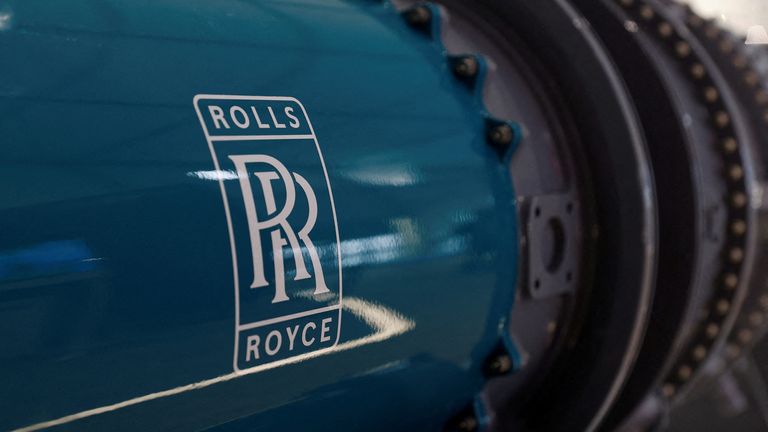
BAE Systems, the UK’s biggest engineering company, has enjoyed a record year for new orders as western governments stepped up defence spending in response to Russia’s attack on Ukraine..
Britain’s premier defence contractor saw a record order intake of £37.1bn – taking its order backlog to £58.9bn.
BAE, whose current work includes building type 26 frigates for the Royal Navy, making electronic warfare systems for the F-35 jet fighter and making the Beowulf unarmoured all-terrain vehicle for the US Army, said it was expecting order growth this year to be better still.
Underlying operating profits for 2022 came in at £2.5bn – up 12.5% on 2021 – as top line sales grew by 4.4% to £23.3bn.
BAE, one of the biggest suppliers to the US Pentagon, also enjoyed a tailwind from the strength of the US dollar against the pound.
The results allowed the company to raise its dividend to shareholders for the 19th consecutive year.
But it was that big increase in the size of the order book that really caught the eye.
The biggest portion of the new orders came in air, driven by new orders from Saudi Arabia and for MBDA, the European missiles systems business in which BAE is a partner.
Maritime, driven by orders for the type 26 frigate and the UK’s dreadnought submarine programme, also contributed a big chunk of new business.
However, the other three key product and service areas – electronic systems, platforms and services and cyber and intelligence – all enjoyed growth in new orders as well.
The latter, while still the smallest part of BAE in terms of sales and profits, is among its most profitable businesses in terms of returns.
‘Tremendous potential ahead’
Charles Woodburn, the chief executive, said: “This is just the start. I still see tremendous potential ahead. We are investing in the business to support the future. We have leading technology solutions for our customers.”
He said BAE’s diverse geographic footprint, its deep customer relationships in the US, Europe and the Middle East and the multi-year nature of many contracts would create numerous opportunities in the future.
Mr Woodburn said it was not widely enough appreciated that BAE’s ability to export from the US, UK, Australia and Sweden meant it was “uniquely well equipped” to compete in multiple markets.
Re-equipping ammo stocks amid Ukraine war
He highlighted the urgent need to re-equip armed forces with ammunition – much of which has been diverted to Ukraine by its western allies – as one area where BAE’s strengths would stand it in good stead.
Read more: War in Ukraine helps boost earnings outlook at BAE Systems
BAE, which has two major Swedish subsidiaries in Hagglunds and Bofors, is also seen as a potential beneficiary if Sweden and Finland’s applications to join NATO are approved and the two countries raise defence spending accordingly.
Interestingly, while some of the sales growth is coming from BAE passing on inflation to customers, the vast majority comes from actually growing sales.
Only around a third of contracts are linked to the rate of inflation – a headwind that Mr Woodburn said BAE was increasingly comfortable with managing.
Cognisant of past criticisms of BAE for being too heavily dependent on Saudi defence orders, Mr Woodburn also stressed that no one programme represents more than 10% of group revenues.
UK-Australia security pact
Disappointingly, though, there was little news around the potential benefits for BAE from AUKUS, the new security pact between Australia, the UK and the US, which was announced 18 months ago.
Mr Woodburn said there was little he could say publicly but pointed to some work already being done around submarines – Australia’s decision to switch from French-made to British-made submarines created fury in Paris – cyber security and quantum computing.
The governments of the three countries are due to provide an update next month on the agreement and Mr Woodburn said he had no reason to think that would not be delivered.
There was, though, an update on the work BAE is doing as the lead contractor in the future combat air system programme, aimed at building Tempest, the sixth-generation jet fighter.
The project recently won a boost as Japan joined the Anglo-Italian programme. The company said work was progressing well and reiterated – as was announced before Christmas – that there are plans for the UK to lead the development of a new flying combat air demonstrator set to fly within the next five years.
The overall picture is one of a business that is diversified both in terms of its geographic footprint, customer base and its products and services.
Crucially, a major criticism often levelled at BAE in the past – that it fails to generate enough cash from its activities – also appears to be being addressed.
Shares of BAE, which with an increase of 48% have been the best performer in the FTSE 100 over the last 12 months, fell by just over 1% having hit an all-time high on Wednesday evening.
Rolls-Royce takes City by surprise
Elsewhere, another of the UK’s big prestige engineering companies, Rolls-Royce, was taking the City by surprise with appreciably better results than expected.
The aircraft engine maker reported an underlying operating profit for 2022 of £652m – up 57% on 2021 – thanks to a better performance in its civil aerospace and power systems operations.
The shares were ahead by as much as 20% at one stage as investors digested not only this news but guidance that the company is expecting operating profits of £800m-£1bn for 2023.
Tufan Erginbilgic, the new chief executive, said Rolls had benefitted from a 35% increase in flying hours for its engines and highlighted new large engine orders received from Malaysia Aviation Group, Norse Atlantic Airways and Qantas.
He said Rolls was assuming large engine flying hours this year would come in at 80-90% of the 2019 level.
Underperforming for extended period
However, in his assessment or the company’s prospects, Mr Erginbilgic – a former BP executive who succeeded the long-running Warren East at the start of the year – pulled no punches.
He said Rolls had been underperforming for an extended period.
He added: “This is not just a COVID issue. Cash generation is unsatisfactory and our debt is too high.”
Mr Erginbilgic said too much of the company’s resources were simply covering its costs and interest payments and stifling its ability to invest.
He said it had a relatively high fixed cost base and lower profit margins than its rivals: “In the last five years, even excluding the COVID year of 2020, we have averaged a return on capital employed of just 3.5%.”
Arguing that Rolls had in the past lacked strategic clarity and tried to keep too many options open, he added: “I believe we have the potential to be a much higher quality and much more competitive company.
“We must only invest in new technologies where we are differentiated, where the market opportunity is sufficiently large and where there are synergies with our existing operations.”
‘Monumental uncertainties’
It will be tempting to suggest that, with massive demand still pent-up for flying, a strong 2023 for Rolls is all but guaranteed.
But Mr Erginbilgic warned there were “monumental uncertainties and challenges” in the guidance he was offering for the year, including inflation, potential supply chain disruption, interest rate rises and possible recessions around the world.
Investors also have other questions.
One is that, with civil aerospace set to continue growing in 2023, how easily they will be able to discern how well Rolls has done due to its own self-help measures – as opposed to just a general improvement in market conditions.
Looming redundancies but good potential to generate cash
Another is that with big a round of redundancies looming, Rolls may lose some people it would rather hang onto, due to the tight labour market.
Mr Erginbilgic said: “When we engage with our people, they are very excited about the future. Who doesn’t want to work for a successful company? And who wants to work for an underperforming company? Everybody has a role and we need to mobilise the whole workforce.
“Starting with clarity, why we need to change, and a very clear strategy, everybody knows their role.”
Rolls also still has net debt of £3.3bn and there is a degree of scepticism among investors that the company will be able to get that down by self-help measures and increased cash generation rather than by a sale of new shares.
This business, if it is managed the right way, has good potential to generate cash.
“We are already into our performance improvement agenda. We are looking to drive performance improvement as we speak. There is a huge sense of urgency there. Strategic clarity will follow that and then we will combine the two. Both of them will come together.”
After the near-death experience that the company went through during the pandemic, that will be music to the ears not only of investors but also the government, which is looking to Rolls to play a key role in the energy transition with the delivery of small modular nuclear reactors.









